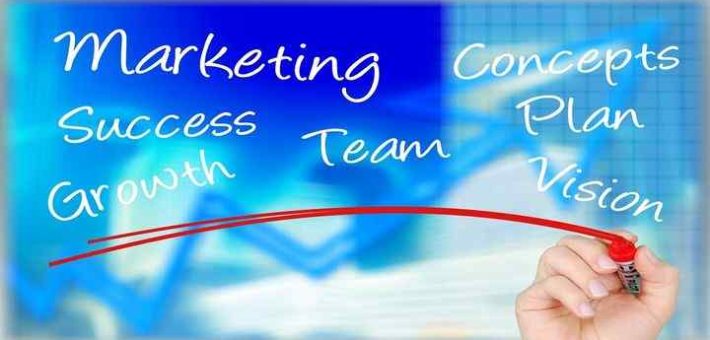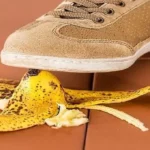More MCQs
HOME
Categories
Courses
Commerce and Finance MCQS
Business management MCQs
Operations Management MCQs
Production Planning and Control MCQs
Operational Capacity Management MCQs
Quality Management MCQs
Total Quality Management MCQs
Lean Manufacturing MCQs
Human Resource Management MCQs
Human Resource Planning MCQs
Human Resource Practices MCQs
Employee Motivation MCQs
Marketing Strategy MCQs
Marketing Communication MCQs
Consumer Behavior MCQs
Performance measurement MCQs
Balanced Scorecard MCQs
Marketing Communication MCQs
A brand is a name, symbol, term, mark or design that enables customers to identify and distinguish the product of one supplier from those offered by competitors. Here on MCQs.club we have prepared easy Multiple-Choice Questions (MCQs) on marketing communication that covers courses like integrated marketing communication, the action plan, its concept and introduction, product and service marketing communication, brand management and 4ps of marketing communication strategy with examples. Our prepared MCQs are useful for Professional Accountancy exams, Competitive exams and Business management exams.
- Once the positioning strategy has been arrived at, the marketing mix will be formulated. The marketing mix should focus on satisfying customer’s needs profitably.
- The above statement is incorrect
- The above statement is correct
- The traditional marketing mix 4P’s are:
- Product, Place
- Promotion, Price
- People, Processes, Physical evidence (for service industry)
- All of the above
- The marketing mix is essentially the working out of the tactical details of the positioning strategy.
- True
- False
- A product can be a physical commodity, a service or an experience. It plays important role in the marketing mix, such as:
- It plays a key role in satisfying the customer’s needs
- Product differentiation is an important part of competitive strategy
- Both A&B
- None
- Product portfolios – A product portfolio is a collection of products or services an organization provides to its customers. Identify the elements of a typical product portfolio:
- Product item – the organization will usually sell a variety of product items
- Product line – this is a collection of product items that are closely related
- Product mix – this is the total range of product lines that a company has to offer.
- All of the above
- The product can be viewed or defined in a number of different ways. Identify such ways:
- The core product
- The actual product
- The augmented product
- All of the above
- The core product is –:
- What is the buyer really buying? The core product refers to the use, benefit or problem-solving service that the consumer is really buying when purchasing the product, i.e. the need that is being fulfilled.
- The tangible product or intangible service that serves as the medium for receiving core product benefits.
- Consists of the measures taken to help the consumer put the actual product to sustained use, including installation, delivery and credit etc.
- None
- The actual product is –:
- What is the buyer really buying? The core product refers to the use, benefit or problem-solving service that the consumer is really buying when purchasing the product, i.e. the need that is being fulfilled.
- The tangible product or intangible service that serves as the medium for receiving core product benefits.
- Consists of the measures taken to help the consumer put the actual product to sustained use, including installation, delivery and credit etc.
- None
- The augmented product is –:
- What is the buyer really buying? The core product refers to the use, benefit or problem-solving service that the consumer is really buying when purchasing the product, i.e. the need that is being fulfilled.
- The tangible product or intangible service that serves as the medium for receiving core product benefits.
- Consists of the measures taken to help the consumer put the actual product to sustained use, including installation, delivery and credit etc.
- None
- The difficulties of marketing services include:
- Intangibility – services cannot be seen, tasted or touched which makes it difficult for a customer to examine a service in advance.
- Inseparability – the service is often inseparable from the individual delivering the service
- Heterogeneity – The service varies from one occasion to the next and therefore it is difficult to standardize and guarantee the quality.
- All of the above
- The factors influencing price; the 3C’s include:
- Cost – the company will want to cover its cost and make a profit
- Competitors – how much do they charge for similar products?
- Customers – how much are they willing to pay for the product?
- All of the above
- The pricing strategy should not be made in isolation. It is important that the company considers:
- The positioning strategy
- The products stage in the product life cycle
- Both A&B
- None
- Which of the following statement is correct with regard to ‘place’ (distribution channels):
- The word ‘place’ is largely used to describe the process of distribution from the producer to the purchaser.
- The process of distribution often involves one or more intermediaries.
- Direct marketing avoids intermediaries
- All of the above
- The types of intermediary are:
- Retailers
- Wholesalers and agents
- The internet
- All of the above
- The two best-known distribution strategies are called ‘pull’ and ‘push’.
- True
- False
- Pull strategy – means massive advertising to create consumer demand and this demand more or less forces the retailers to include this product in their assortment.
- The above statement is correct
- The above statement is incorrect
- Push strategy – means that the producer does not try to create consumer demand through heavy advertising, but instead offers high margins to the trade channel members and expects that in return they will promote and market the product.
- The above statement is incorrect
- The above statement is correct
- Products can be classified as consumer goods or industrial goods. Consumer goods are sold directly to the person who will ultimately use them. Industrial goods are used in the production of other products.
- True
- False
- Consumer goods can be classified as:
- Convenience goods
- Shopping goods
- Specialty goods
- Unsought goods
- All of the above
- Industrial goods can be classified as:
- Installations, Accessories, such
- Raw materials (for example plastic, metal, wood), Components
- Supplies, such as office stationery and cleaning materials
- All of the above
- The BCG matrix classifies products or brands on the basis of their market share and according to the rate of growth in the market as a whole, as a way of assessing their role in the product range.
- The above statement is true
- The above statement is false
- Identify the stages often followed in the development of a product or service.
- Customer needs – the product is designed to fulfil particular customer needs (such as quality, price or design).
- Screening – the concept should be considered carefully to ensure it meets certain criteria such as profitability or taking market share.
- Design – the design process can be in different forms such as building an electronic or physical prototype. Value engineering procedures may be followed to ensure all components add value.
- Time-to-Market – this is the time a product or service takes to get to the market place. A short time span is desirable to reduce cost and to get ahead of the competition.
- Testing – the product or service should be tested to check that it works, that it meets the needs of the customer and that the customer likes it.
- All of the above
- (I) (III) (V) only
- (III) (V) only
- None
- The organisation aims to recover the investment in a new product or service as quickly as possible, to achieve a minimum payback period. The price is set to facilitate this objective. This objective tends to be used when:
- The business is high risk
- Rapid changes in fashion or technology are expected
- The innovator is short of cash
- All of the above
- A brand is a name, symbol, term, mark or design that enables customers to identify and distinguish the product of one supplier from those offered by competitors.
- True
- False
- Brands can vary from company names to logos to product names or even people themselves.
- False
- True
- Identify the attributes of brands from the followings:
- People use brands to make statements about themselves
- Good brands reduce the risk of poor product choice
- Brands can be a key asset for a business
- Brands are the reason consumers choose one company over another
- Although intangible, brands can be of substantial value
- Strong brands can positively influence share performance
- Brands can command higher prices
- All of the above
- (I) (IV) and (VII) only
- (IV) and (VII) only
- None
- Brand equity – is the premium that customers are prepared to pay for a brand compared to a similar, generic product.
- False
- True
- Characteristics of a strong brand include:
- Consistency – this is crucial to the development of the brand.
- A distinctive name – the name should have positive associations with the product.
- Distinctive product features – these will help to prompt instant recognition.
- All of the above
- The value of a brand is based on the extent to which it has:
- High loyalty and Perceived quality
- Name awareness
- Strong personality association
- Patents and trademarks
- All of the above
- Identify Brand strategies:
- Line extensions and brand extensions
- Multi brands and new brands
- Co brands
- All of the above
- Identify which of the following statement is correct with regard to branding.
- Effective brand management should translate into improved profit potential
- Although intangible, brands can be of substantial value
- A strong brand will create the opportunity to create higher prices than competitors
- A brand can distinguish an organization from its competitors acting as a source of competitive advantage.
- Brands can connect with customers in deep way resulting in high levels of customer loyalty
- The brand should assist with other marketing practices
- Effective brand management should add to grand loyalty, repeat sales and habitual buying.
- All of the above
- (I) (IV) and (VII) only
- (I) and (VII) only
- None
- Line extension –:
- This is where a brand is applied to a variant of a product within the same product category. It is often used by car manufacturers when they produce variants within the same class of car.
- This is the introduction of new flavours, sizes etc to a brand, to capitalise on existing brand loyalty.
- This is the introduction of a number of brands that all satisfy very similar product characteristics. This can be used where there is little or no brand loyalty, in order to pick up buyers who are constantly changing brands.
- None
- Brand extension –:
- This is where a brand is applied to a variant of a product within the same product category. It is often used by car manufacturers when they produce variants within the same class of car.
- This is the introduction of new flavours, sizes etc to a brand, to capitalise on existing brand loyalty.
- This is the introduction of a number of brands that all satisfy very similar product characteristics. This can be used where there is little or no brand loyalty, in order to pick up buyers who are constantly changing brands.
- None
- Multi-branding –:
- This is where a brand is applied to a variant of a product within the same product category. It is often used by car manufacturers when they produce variants within the same class of car.
- This is the introduction of new flavours, sizes etc to a brand, to capitalise on existing brand loyalty.
- This is the introduction of a number of brands that all satisfy very similar product characteristics. This can be used where there is little or no brand loyalty, in order to pick up buyers who are constantly changing brands.
- None
- New additions to the product range are beneficial because:
- They require a lower level of marketing investment (part of the ‘image’ already being known).
- The extension of the brand presents less risk to consumers who might be worried about trying something new.
- Both A&B
- None
- Brands are often a source of competitive advantage. Products with strong brands often sell themselves and can command high prices when compared to competitor products. Therefore, a value can be attributed to them.
- The above statement is true
- The above statement is false
- Identify the approaches to valuing a brand:
- Market approach
- Cost approach
- Income approach
- All of the above
- The promotion mix consists of the blend of promotional tools that are considered appropriate for a specific marketing campaign. General categories of approaches to promotion include:
- Mass media – the whole market segment is targeted with the same communication.
- Personal and interactive – two-way communication between a sales person and potential customer.
- Personal and direct – one-way communication from the seller to the potential customer, usually by letter or email.
- All of the above
- Identify the types of marketing that can be applied by an organisation.
- Consumer marketing (the 4Ps), Services marketing (the 3Ps of the extended marketing mix)
- Direct/indirect marketing, Guerrilla marketing, Viral marketing
- Interactive marketing, Experiential marketing, E-marketing, Internal marketing
- All of the above
- Which of the following is correct regarding ‘Telemarking’?
- One form of direct marketing is telemarketing.
- Telemarketing is a quick, accurate and flexible tool for gathering, maintaining and helping to exploit relevant up-to-date information about customers and prospects.
- Telemarketing is the planned and controlled use of the telephone for sales and marketing opportunities.
- All of the above are correct
- Characteristics of telemarketing include:
- Targeted – The message is appropriately tailored to the recipient.
- Personal – Telemarketers can determine and respond immediately to the specific needs of individuals, building long-term personal and profitable relationships.
- Interactive – Since the dialogue is live, the conversation can be guided to achieve the desired results; the representative is in control.
- Immediate – Every outbound call achieves an immediate result, even if it is a wrong number or ‘not interested’. Customers can be given 24-hour constant access to the company (for inbound calls).
- Flexible – Conversations can be tailored spontaneously as the representative responds to the contact’s needs. Campaign variables can be tested quickly, and changes made whilst the campaign is in progress.
- All of the above
- (I) (IV) and (V) only
- (IV) and (V) only
- None
- Possible disadvantages of telemarketing include:
- Telemarketing can be costly.
- There are few economies of scale
- If poorly handled, telemarketing may be interpreted as intrusive. This may alienate potential customers.
- All of the above
- Guerrilla marketing involves taking people by surprise and ‘creating a buzz’ in unexpected places. It relies more use of imagination than large sums of money.
- True
- False
- Identify the principles of guerrilla marketing:
- It is specifically geared for small organisations and entrepreneurs
- It should be based on psychology rather than experience, judgment, and guesswork
- It should be based on time, energy, and imagination rather than money
- Organisations should be judged on profit not sales
- Marketers should focus on the number of new relationships created in each time period
- Organisations should focus on creating a standard of excellence in their products and services rather than diversifying.
- Organisations should co-operate with competitors.
- (IV) (VI) only
- (IV) (VI) (VII) only
- All of the above
- None
- Viral marketing involves the use of pre-existing social networks to spread brand awareness or other marketing objectives. The viral campaign is successful when a customer receives the marketing message, copies it, and sends it to their friends or posts it on social networking sites such as Twitter or Facebook.
- The above statement is correct
- The above statement is incorrect
- Principles of an effective viral marketing strategy include:
- Provide free products or services – free items attract attention
- The form of the message must be easy to pass on
- The transmission method must be scalable from small to large very quickly to aid the spread of the message
- The message must exploit common motivations and behaviours. Greed, love, success and the need to look ‘cool’ can provide motivation to spread the message
- Use existing communication networks. People have lists of contacts on their email and social networking sites – getting the message in the right place means it will multiply very quickly
- Take advantage of other people’s resources – for example getting banner ads and links onto other websites.
- (V) only
- (IV) (V) and (VI) only
- (Iv) and (V) only
- All of the above
- Which of the following statement is correct regarding ‘Experiential marketing’?
- Experiential marketing involves providing an experience that creates an emotional connection between a person and a brand, product or idea.
- Experiential marketing encourages potential customers to engage with the personality of the brand, through experiencing it.
- It is a combination of in-store promotion techniques and field marketing.
- All of the above
—More to come soon—





One Response
U